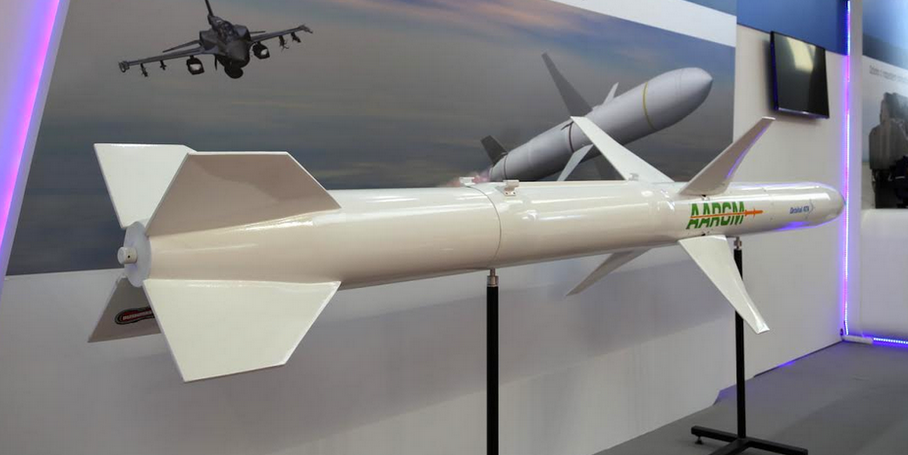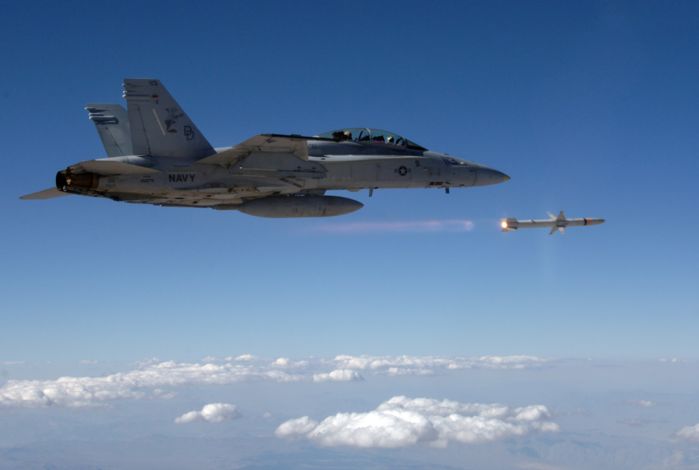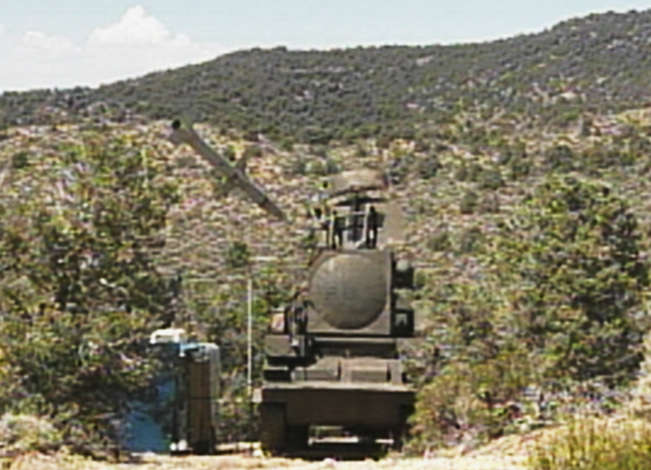Armed Forces
AARGM Missile for Italy and Germany. NATO Rebuilds Its Anti-Radiation Capabilities
AARGM anti-radiation missile, developed for the US Navy and for the Italian government has also been selected by the German Air Force, as a replacement of the AGM-88B HARM weapon, to become integrated with the Tornado jets in Luftwaffe in the future. As a result of the aforesaid steps, the missile will become the core armament of the NATO air forces specialized in SEAD/DEAD operations (Suppression/Destruction of Enemy Air Defences). The missiles are also being offered to Poland, as the armament for the F-16 C/D Block 52+ fighters.
AARGM missiles will become a part of the armament inventory of the German and Italian Air Forces. As we were informed by the spokesperson for the German MoD: „Germany has chosen to upgrade a subset of the AGM-88B HARM missiles to AGM-88E AARGM.”. In this way, Luftwaffe is going to become the second user of the said missiles, among the European NATO member states.
The deliveries of the conversion kits for the HARM missiles, upgrading them to the AARGM version, are expected to take place starting from 2020. This is related to the time constraints, namely the time which needs to pass from the moment of signing the agreement, to the first deliveries. The works are to include most of the HARM missiles that remain in storage, however some of them will be left unmodified, in their standard AGM-88B version, until the end of their operational lifetimes.
The Bundeswehr has recently decided to start a procurement program that aims to upgrade a substantial part of the current HARM stock to the AGM-88E AARGM version. The delivery of the modification kits will start from 2020 onwards.
Germany also takes into account the potential integration of the AARGM missiles with other platforms, however, as it was noted by the spokesperson for the MoD, this issue is a subject to further analyses. In practical terms the above development means that Eurofighter Typhoon jets, as well as the expected successors of the Tornado attack aircraft, could potentially be integrated with the AARGM missiles prospectively, in the future. Nonetheless, no decisions within that scope have been made so far.
Up until now, selection of the AARGM missiles has a preliminary profile. The Agreement still needs an approval on the part of the Bundestag, which is planned to happen next year. Procurement of these missiles is expected to be finalized within the framework of the FMS programme, as the talks will involve the US Navy.
Recently, another contract has been signed, concerning the deliveries of kits that are going to make it possible to convert the Italian Air Force’s HARM missiles to the AARGM variant. According to the release published by the Pentagon on 26th September, the contract in question is related to a full scale conversion of 19 missiles, within the framework of the 5th series production lot. The works will be covered with an amount of USD 14.7 million.
Orbital ATK company, the industrial partner within the programme, is going to act as the contractor, while the whole procedure is going to be finalized by September 2018. Italy, since the very beginning, alongside the US Navy, has been involved in the programme, while the relevant contract pertaining, to procurement of another batch of missiles may be interpreted as a confirmation of progress seen within the framework of the said initiative. It is estimated that deliveries of the AARGM missiles would take place two years after a relevant contract is signed by the potential foreign user.
Hence, AARGM missiles are going to be acquired by Italy and Germany, two European NATO member states who have significant SEAD/DEAD capabilities at their disposal. Not only do the aforesaid nations use the anti-radiation missiles, as the air forces of Italy and Germany also operate a number of specialized electronic warfare Tornado ECR aircraft which are being gradually modernized, for the purpose of tailoring them to the requirements of the contemporary battlefield.
Both nations mentioned above have also been using the older variants of the HARM missiles in combat, also during the Allied Force operation in Kosovo, back in 1999. The aforesaid states are burdened with responsibility regarding a significant part of the operations (including training or capability expansion) carried out by the European NATO member states, within the scope of the electronic warfare or SEAD/DEAD capabilities. Moreover, according to the decisions made during the NATO summit in Wales, Germany became a framework nation, participating in the NATO initiative related to “delivering fire-power from land, air, and sea”.

One cannot rule out a possibility that a decision to expand and modernize the SEAD potential, also with involvement seen on the part of the Tornado ECR aircraft, was caused by the worsening shape of the security context in Europe. The experts show that potential resignation from modernization within that scope in Germany would lead to a gradual disappearing of these significant capabilities.
Now, NATO member states rarely have assets at their disposal which would provide them with SEAD/DEAD capacity. At the same time, SEAD/DEAD operations constitute one of the most desirable areas to be expanded and developed. SEAD/DEAD capacity, throughout the recent years, has been a subject to cuts, taking place before the Ukrainian crisis emerged. Here, the United Kingdom may be a good example, since RAF is one of the mightiest air forces in Europe. ALARM anti-radiation missiles, used by the Royal Air Force, have been withdrawn without a successor. Nonetheless, the weapon is being utilized by the Arab coalition in Yemen now, which was also confirmed by the UK Defence Secretary, Michael Fallon.
Poland is also willing to joint the group of nations which has SEAD/DEAD capabilities at its disposal. The anti-radiation missiles are to be procured for the Polish F-16C/D Block 52+ jets. The Armament Inspectorate of the Polish Ministry of Defence has already carried out a market analysis within the said scope. Acquisition of this weaponry, along with penetration bomb units and pods with precision, sensor-fused anti-armor projectiles is going to become yet another expansion of the Polish F-16’s air-to-ground capabilities. Among the offers which were a subject to the analysis, AARGM proposal also has been scrutinized.
The Polish Air Force had anti-radiation missiles contained within its inventory in the past – here we are referring to the Kh-25MP missiles used by the Su-22M4 fighter-bombers. These missiles were manufactured during the existence of the Warsaw Pact, in order to act against some of the NATO SAMs, such as MIM-23 Hawk and MIM-14 Nike Hercules.
The current plan assumes that missiles that would be usable against the enemy air defences are to be acquired for the fleet of the Polish F-16 multi-role jets. The will to acquire the anti-radiation missiles may be interpreted as a response to the growing threat posed by the air defence systems remaining at disposal of the potential adversary.
The Russian SAM systems stationed in the Kaliningrad Oblast cover a major portion of the Polish territory within their range. Back in September 2014, General Frank Gorenc, Commander of the USAF Europe, stated that 1/3 of the Polish territory is within the range of the Russian IADS (Integrated Air Defence System). As the S-400 system is being developed, along with new missiles being designed for this system, the aforesaid area may be further expanded.

According to the information provided by the Naval Air Systems Command (NAVAIR), AARGM’s top speed is defined as “Mach 2+” while the missile’s range is longer than 60 nautical miles (111 kilometres). This type of an anti-radiation weapon, thanks to the fact that it has been fitted with a relevant INS/GPS guidance solution, is capable of acting against targets that are not an element of the air defence system, provided that, of course, the coordinates of those targets are known. The active millimetre-band radar is to provide the missile with a capability of acting against the mobile targets. Representatives of the Orbital ATK company note that one of the scenarios which would see application of the millimetre radar, is when the radar of the air defence system is turned off and begins to move. In such circumstances, the missile is still said to have a capability to neutralize the target. Orbital ATK claims that the missile’s speed makes it possible to destroy the targets shortly after they are detected. A large portion of the precision guided munitions used by the aircraft is subsonic – and is slower than the HARM or AARGM missiles.
AARGM missile is also capable of comparing and coordinating the data from a variety of sensors (INS/GPS system and passive radar, as well as the active radar), for the purpose of enhancing its precision. Moreover, the AARGM system also offers a capability of selecting, on the basis of the information programmed before the launch, the targets which are the most valuable. The information from the missile’s sensors are also transferred to the cockpit. The navigation system of the weapon also makes it possible to define targeting zones or zones, in which the targets cannot be destroyed. According to the declarations made by the manufacturer, the missile has been designed with the contemporary SEAD/DEAD scenarios in mind.
AARGM has been in full rate production since 2012 now. During the same year, the weapon has attained the initial combat readiness status. On the other hand, back in 2015, test programme pertaining to the modified Block 1 Software Upgrade was carried out, within the SEAD/DEAD scenarios, concerning passive and active detection systems and usage of the active millimetre band radar in the terminal phase of flight Another test involved potential use of the missile against ships. According to the release published by the Orbital ATK company, the tests were successful, and the second test has proven that the missile is capable of acting against moving naval targets, i.e. vessels.

As we know, the AARGM missile utilizes the core components of the AGM-88B/C HARM missile warheads and propulsion system. Thanks to the above, the air forces which have the HARM missiles at their disposal may procure the AARGM weapon through upgrading the older system.
The AARGM solution is already being used by the US Navy and USMC, and the weapon has been integrated with the F/A-18C/D/E/F Super Hornet and E/A-18G Growler jets. The missile has also been ordered by Australia for RAAF’s Super Hornets and Growlers. Until the next year, integration works concerning the Italian Tornadoes are also planned to be finalized.
Back in March 2015, Orbital ATK, the industrial partner of the AARGM programme, has concluded a memorandum of understanding with the German Diehl Defence company, concerning the cooperation referring to manufacturing this type of missiles and to the collaboration with the user. The official release published by the German company stressed the fact that should the AARGM missile be acquired by the Bundeswehr, a significant portion of works will be performed in Germany. It was noted, at the same time, that the company has already been involved in the manufacturing process concerning the HARM missile, currently utilized by the Luftwaffe. At the moment we also know that the AARGM missile has been selected as the Luftwaffe’s weapon, it is also assumed that Diehl, as well as Airbus, will be involved in the integration works planned, also within the scope of integrating the weapon with the Tornado aircraft. Germany is going to become the third export user of this type of missiles, alongside the United States of America.



